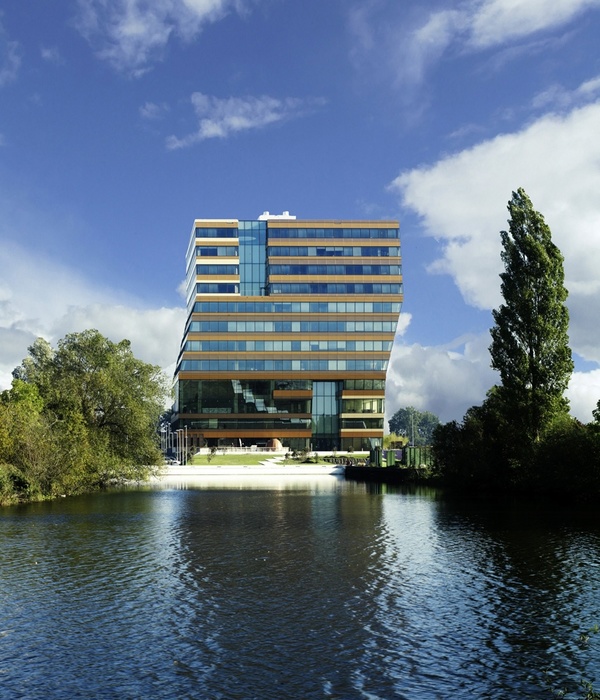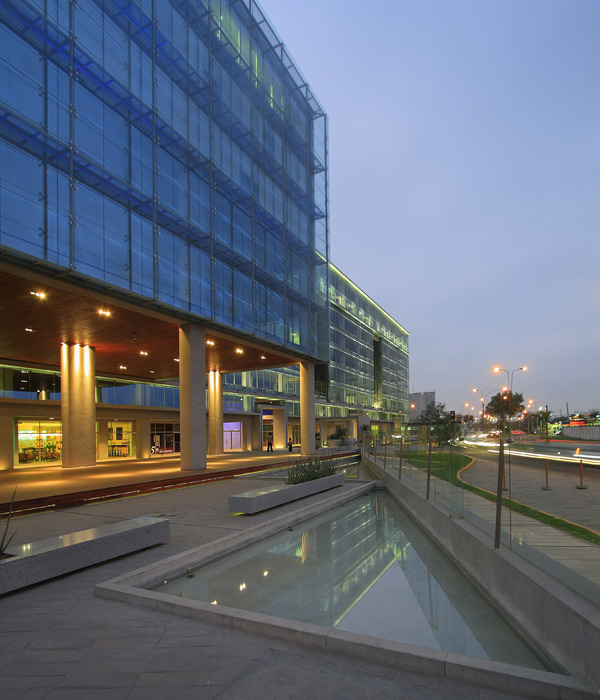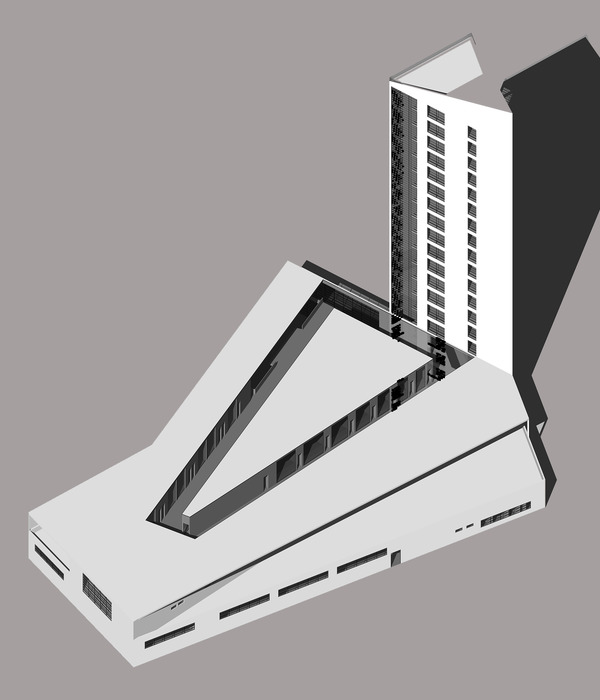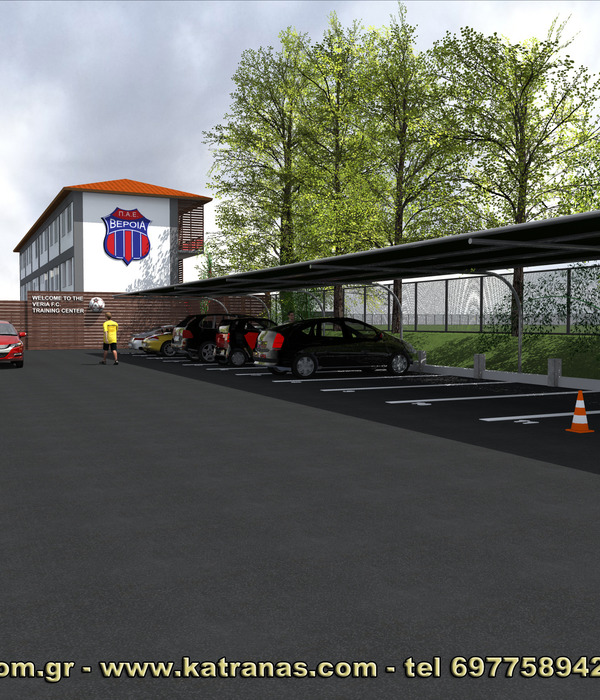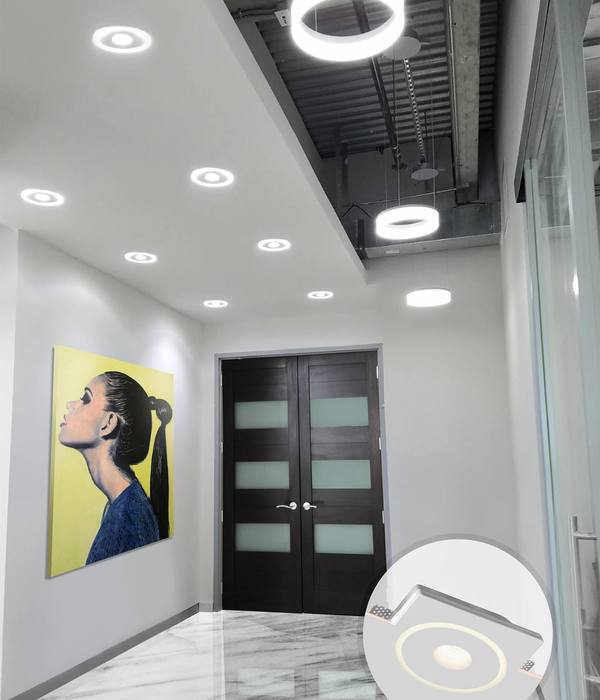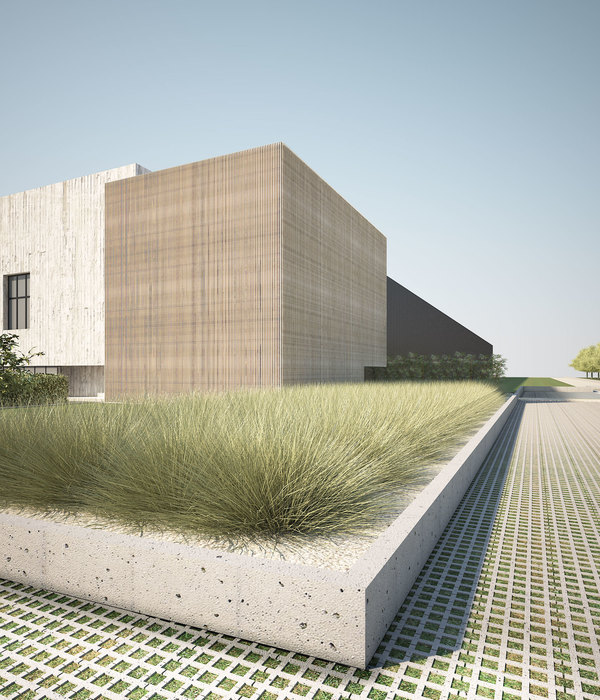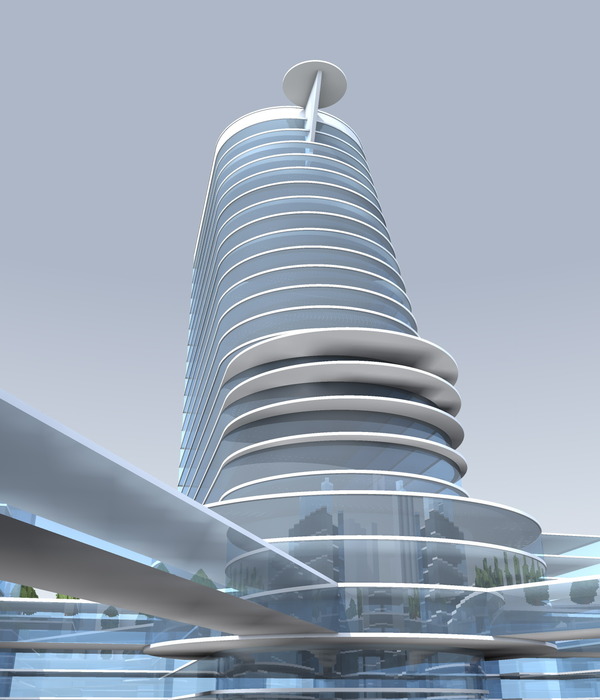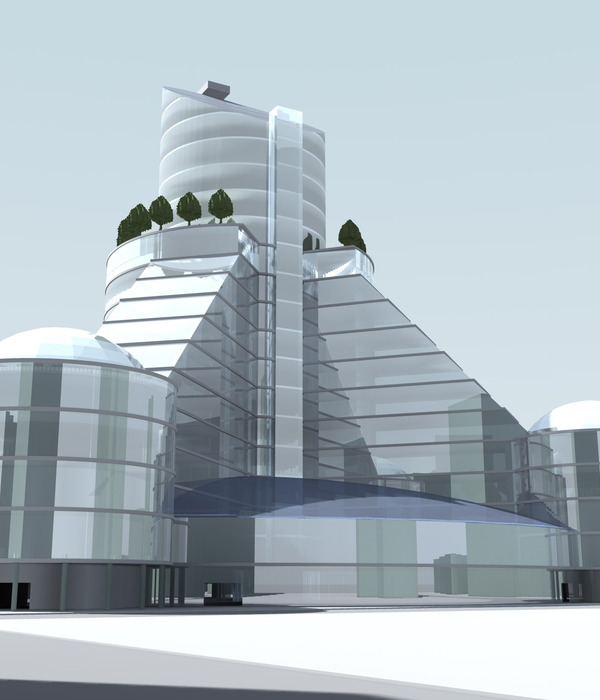路易·康说:“空间的灵魂是光”;
安藤忠雄认为:“真正要理解建筑,不是通过媒体,而是要通过自己的五官来体验空间,这一点比什么都重要。 ”
斯蒂文·霍尔在其设计实践中也提到应该通过设计多层次、多功能和多元素的空间,创造出丰富的体验。利用光线、材料、色彩和声音等元素,使空间在不同时间和环境条件下呈现出不同的面貌,激发使用者的好奇心和探索欲望。
细数如西扎、巴拉甘、柯布、巴埃萨等建筑大师,皆在善用光线方面有自己独特的造诣,囿于技术的限制,诸位大师所在的时代关注的多在于讨论天然光线和空间、建筑的关系,而如今日人工光线技术之成熟,关于人工光线和空间,人工光线和建筑关系的讨论却与者寥寥。
Louis Kahn said: “The soul of space is light”;
According to Andou Tadao, “To truly understand architecture, it is more important than anything else to experience space not through the media, but through your own sense organs.”
Steven Holl also mentioned in his design practice that a rich experience should be created by designing multi-level, multi-functional and multi-element spaces. Using elements such as light, materials, color and sound, the space presents different appearances at different times and under different environmental conditions, stimulating user’s curiosity and desire to explore.
Architects such as Siza, Barragan, Cobb, and Baeza all have their own unique attainments in making good use of light. Due to technical limitations, the era in which these masters lived mostly focused on discussing the relationship between natural light and space, as well as architecture. However, with the maturity of artificial light technology today, there are few discussions on the relationship between artificial light and space, and between artificial light and architecture.
▼杭州国家版本馆夜景(方方作品),Night scene of Hangzhou National Archives of Publications and Culture (Fang Fang’s work)
一方面,我们国家在经历一场建筑的大跃进时期,大量的国际主义风格建筑被迅速造出,并带来大量的操作简便的点、线、面所组成媒体屏的城市亮化现状。
另一方面,关于新技术的讨论偏重于科学技术方面,而新技术所带来的审美风潮、哲学思考方面却忽略了社会发展所产生的精神需求。
On the one hand, China is experiencing a period of great leap forward in architecture, and a large number of internationalist-style buildings were rapidly created, and brought a large number of easy-to-operate media screens consisting of dots, lines and surfaces to light up the city.
On the other hand, discussions on new technologies focus on science and technology, without paying attention to the aesthetic trend and philosophical thinking brought about by new technologies, and the spiritual needs brought about by social development.
▼杭州国家版本馆夜景(方方作品),Night scene of Hangzhou National Archives of Publications and Culture(Fang Fang’s work)
所以我们目前看到的是一个魔幻的时代,是理论和实践脱钩,也是物质丰沛和精神虚弱之间充满矛盾的时代。
So what we are currently seeing is a magical era, where theory and practice are decoupled, and it is also an era full of contradictions between material abundance and spiritual weakness.
▼上虞博物馆夜景(方方作品),Night scene of Shangyu Museum (Fang Fang’s work)
▼上虞博物馆夜景(方方作品),Night scene of Shangyu Museum (Fang Fang’s work)
笔者从事照明设计工作已经第十七年,亲眼看着时代巨轮挟裹着技术变革,从卤素灯时代到金卤灯时代又到LED时代,设计从业人员也从最早的只关注灯具发出的光线;到光线和空间的关系;再到光线和建筑的关系;以及今日讨论的光线与健康的关系。这中间所经历的变化巨大——今日之照明设计并非仅在讨论室内照度几何,安装什么灯具或在室外如何勾边描摹而已。
民众对光线的理解多在于其是否能满足使用需求,国家据此制定了很多标准,比如针对室内空间的《建筑照明设计标准GB50034》,针对日光的《建筑采光设计标准GB50033》,也有针对城市环境的《城市夜景照明设计规范JGJ/T-163》等,设计数值有据可循,如何表达观念却还在初级探索阶段。
I have been engaged in lighting design for seventeen years and have witnessed the technological changes brought about by the great wheel of the times, from the era of halogen lamps to the era of metal halide lamps and then to LED. Design practitioners have also shifted their focus on the light emitted by lamps only to the relationship between light and space; then to the relationship between light and architecture; and the relationship between light and health discussed today. Huge changes have been occurred in the process-today’s lighting design is not just about discussing indoor illuminance geometry, what lighting fixtures to install, or how to trace the edges outdoors.
Most people’s understanding of light depends on whether it can meet the needs of use. According to this, the state has formulated many standards, such as GB50034 “Standard for Lighting Design of Building” for indoor spaces, GB50033 “Standard for Daylighting Design of Buildings” for daylight, and JJ/T-163 “Code for Lighting Design of Urban Nightscape” for urban environments. The design values are well documented, but how to express ideas is still in the initial stage of exploration.
▼歌尔集团潍坊光电园综合楼夜景实景图(方方作品),Night scene of the complex building of Goertek Weifang Optoelectronics Park (Fang Fang’s works)
今天我们更多讨论的是“建筑化照明(Architectural Lighting)”,建筑化照明是指将灯光设计与建筑物或室内环境相结合,以创造出具有艺术性、功能性和情感性的照明效果。它是一种综合性的设计概念,旨在通过灯光的布置、配光、色彩和控制,来提升建筑物的外观、空间氛围和使用体验。
建筑化照明不仅仅是提供舒适的照明亮度,更强调通过灯光的创造性运用,展现建筑的特点和美感。它可以突出建筑物的轮廓、形状和细节,营造出独特的光影效果。通过调节灯光的色温、光强度和色彩,可以创造出不同的氛围和情绪,为用户带来舒适、温馨或激发创造力的体验。
建筑化照明的奠基人是第一代照明设计师理查德·凯利(Richard Kelly),他最著名的作品之一是纽约西格拉姆大厦,凯利提出了 “光之塔 “的概念,这是建筑照明的一个里程碑,他在内部立面采用定制的垂直照明系统突出了核心筒背景,在功能区设置了一层层筒灯又加强了整座塔楼的华彩,凯利的设计专注于效果而非灯具,他对“环境光”“华彩光”“焦点光”的定义在今天仍然有超凡的价值。
Today, we are talking more about “Architectural Lighting”, which refers to the combination of lighting design with buildings or indoor environments to create artistic, functional and emotional lighting effects. It is a comprehensive design concept, aiming at improving the appearance, space atmosphere and use experience of buildings through the arrangement, light distribution, color and control of lights.
Architectural lighting not only provides comfortable lighting brightness, but also emphasizes the creative use of lighting to show the characteristics and beauty of the building. It can highlight the outline, shape and details of the building and create a unique light and shadow effect. By adjusting the color temperature, intensity, and color of the lighting, different atmospheres and emotions can be created, providing users with a comfortable, warm, or creative experience.
The founder of architectural lighting is Richard Kelly, the first-generation lighting designer. One of his most famous works is the Seagram Building in New York. Kelly proposed the concept of the “Tower of Light”, which is a milestone in architectural lighting. He used a customized vertical lighting system on the internal facade to highlight the background of the core tube, and set up layers of downlights in the functional area to enhance the splendor of the whole tower. Kelly’s design focuses on effects rather than lighting fixtures, and his definitions of “ambient light”, “brilliant light,” and “focal light” still has extraordinary value today.
▼西格拉姆大厦,Seagram Building
图片来源:https://commons.wikimedia.org/
离开照明设计专项的范畴看向更加广阔的世界,建筑大师对光线的思考更加无拘无束,卒姆托在瓦尔斯温泉浴场项目中,于室内的片麻岩墙面上方设置了令人惊叹的悬挑离缝,使光线自由洒落在片麻岩肌理上,模糊了室内外的界限。在克劳斯兄弟教堂项目中,更把建造光线从上方倾斜而下的过程暗喻为获得新生的象征意义。路易·康的埃克塞特学院图书馆的采光中庭、罗马万神殿的穹顶圆洞、安藤忠雄光之教堂中的十字架也都用结果高度赞扬了光线和建筑的合作契机。光线虽然不可捉摸,但它可谓是建筑最重要的灵魂之一。
Looking beyond the realm of lighting design to the wider world, architects are more unrestrained in their thinking about light. As in the case of the Therme Vals project, Zumthor set amazing overhanging joints above the interior Gneiss wall, so that the light can freely sprinkle on the Gneiss texture, blurring the boundaries between interior and exterior. In the project of Brother Klaus Fieldchapel, the process of building light slanting down from above is metaphorically regarded as the symbolic meaning of gaining new life. The lighting atrium of Louis Kahn’s Exeter College Library, the dome hole of the Pantheon in Rome, and the cross in the Church of Light/Tadao Ando also highly praised the opportunity for cooperation between light and architecture. Although light is unpredictable, it is one of the most important souls of architecture.
▼瓦尔斯温泉浴场内景 ,Interior view of Vals Thermal Baths
图片来源:https://commons.wikimedia.org/
▼埃克塞特学院图书馆内景,Interior of Exeter College Library
图片来源:https://commons.wikimedia.org/
技术发展到今天,我们已经不只限于如何利用天然光线,在建筑化照明中,使用各种类型的灯具和照明设备,例如投射灯、筒灯、壁灯、吊灯等,通过合理的布局和定位,将灯光投射到特定的区域或对象上。同时,利用灯光的遮蔽、反射和折射等特性,可以实现光的控制和引导,使建筑物的外观或内部空间更具层次感和立体感已经不是困难之事。
建筑化照明未必是非常用力的设计形式,笔者曾经设计的龙岩观樾台项目,把光线给于建筑自身最有特点的超平(superflat)顶面,位于场地之上的平顶笼罩下的光线穿越了内外,在高处坡地上方以一种漂浮而轻盈的姿态呈现,克制而有策略的控制光线是建筑化照明的第一原则。该项目获得了业内权威奖项2022年国际照明设计师大奖(IALD)的特别奖。
Today, with the development of technology, we are no longer limited to the utilization of natural light. In architectural lighting, we use various types of lamps and lighting fixtures, such as projection lamps, down lamps, wall lamps, chandeliers, etc., , and project lights onto specific areas or objects through reasonable layout and positioning. At the same time, utilizing the shielding, reflection, and refraction characteristics of light, it is no longer difficult to achieve control and guidance of light, making the appearance or internal space of buildings more layered and three-dimensional.
Architectural lighting is not necessarily a forceful design form. The Longyan Guanyuetai project designed by the author gave light to the most characteristic super flat top surface of the building itself, and the light covered by the flat roof above the site passes through both inside and outside, and is presenting a floating and light posture above the high slope. Restrained and strategic control of light is the first principle of architectural lighting. The project won the special award of the 2022 International Lighting Designer Awards (IALD), an authoritative award in the industry.
▼龙岩观樾台夜景(方方作品),Night scene of Longyan Guanyuetai (Fang Fang’s work)
▼龙岩观樾台夜景(方方作品)Night scene of Longyan Guanyuetai (Fang Fang’s work)
建筑化照明还可以应用于室内空间,为不同功能区域提供合适的照明效果,例如办公室、商业空间、展览馆等。通过灯光的设计,可以创造出适宜的工作环境、良好的商品展示效果或具有戏剧性的空间体验。
Architectural lighting can also be applied to indoor spaces to provide suitable lighting effects for different functional areas, such as offices, commercial spaces, exhibition halls, etc. Through the design of lighting, a suitable working environment, good product display effects, or a dramatic spatial experience can be created.
▼中国国际设计博物馆室内(方方作品),Interior of China International Design Museum (Fang Fang’s work)
▼南昌蔚来NIO HOUSE(方方作品)NIO HOUSE, Nanchang, China (Fang Fang’s work)
▼乾塘餐厅(方方作品),Qian Tang Restaurant (Fang Fang’s work)
人的眼睛对视觉环境具有极高的包容度,我们可以识别照度为3lx(照度数值,标准单位为lx勒克斯)的暗环境,也可以在夏日中午100000lx下行动自如。眼睛在实际场景中可以包容的内容远远超过书籍、平面媒体所能表达的像素极限。根据相关研究成果,人眼球中适应明环境和暗环境是两种感光细胞,当照度对比过大时,视觉适应能力会受到较大挑战,从科学上来说,审美舒适度有相当一部分由生理舒适度决定。舒适的对比度在室内空间中尤其重要。
Human eyes have a high degree of tolerance to the visual environment. We can recognize a dark environment with an illuminance of 3lx (illuminance value, the standard unit is lx lux), and can move freely under 100,000lx at noon in summer. The content that the eyes can accommodate in actual scenes far exceeds the pixel limit that can be expressed in books and print media. According to relevant research results, there are two types of photoreceptor cells in the human eye to adapt to light and dark environments. When the illumination contrast is too large, the visual adaptability will be greatly challenged. From a scientific point of view, a considerable part of aesthetic comfort is determined by physiological comfort. Comfortable contrast is particularly important in indoor spaces.
▼西投·绿城云澜谷(方方作品),Xitou Greentown Yunlangu (Fang Fang’s works)
日本小说家谷崎润一郎在其美学经典《阴翳礼赞》中对明暗光线和记忆交织的描述,将光线视为一种象征,展现了情感、记忆和人生的复杂性,引发了对空间环境和光线的思考和共鸣。但不是说阴暗的和明显的亮度对比即代表复杂性,明亮开阔即代表纯粹性,光线在空间中非封闭且完全静止,光线和光影在空间中所具有的超越物质性的意义和效果。精心的光线设计和光影效果的创造,使建筑空间具有丰富的感知、体验和表达。光线的变化甚至流动、明暗的对比和材质的反射与建筑的形态、空间感和氛围相互交融,使空间成为一个能够引发人们情感共鸣和思考的艺术体验。
Tanizaki Junichiro, a Japanese novelist, described the interweaving of bright and dark light and memory in his aesthetic classic In Praise of Shadows, regarding light as a symbol, showing the complexity of emotion, memory and life, and arousing the reflection and resonance of space environment and light. But it does not mean that the contrast between dark and light brightness represents complexity, bright and open represents purity, light is not closed and completely static in space, and light and shadow have significance and effect beyond materiality in space. The meticulous lighting design and the creation of light and shadow effects make the architectural space rich in perception, experience, and expression. The change and even flow of light, the contrast of light and shade, and the reflection of materials are integrated with the shape, sense of space and atmosphere of the building, making the space an artistic experience that can arouse people’s emotional resonance and thinking.
▼西溪2100CLUB (方方作品)(
点击查看更多
),Xixi 2100CLUB (Fang Fang’s work)
建筑化照明是一种将照明设计与建筑物或室内环境相结合,通过创造性的灯光运用,提升建筑物的外观、空间氛围和使用体验的设计概念和实践。
Architectural lighting is a design concept and practice that combines lighting design with a building or interior environment to enhance the appearance, space atmosphere and use experience of a building through the creative use of light.
作者介绍 | About the author
方方 Fang Fang
浙江省建筑设计研究院 照明设计所长
Director of Lighting Design of Zhejiang Architectural Design and Research Institute
高级照明设计师(国家一级)
Senior Lighting Designer (National Grade I)
中国照明学会 专业会员
Professional member of China Illuminating Engineering Society
国际照明设计师协会(IALD)专业会员
Professional member of International Association of Lighting Designers (IALD)
美国照明设计协会(IES) 专业会员
Professional member of Illuminating Engineering Society of North America (IES)
毕业于中国美术学院,从事照明设计17年,项目涵盖建筑照明、室内照明、文旅照明等多范畴。主持过多项大型作品设计。著有个人专著《光的构筑》,作品及个人多次获得数十项国内外专业类各类奖项,包括国际照明设计师大奖(IALD)、照明设计杂志大奖(LDA)、美国照明设计大奖(LIT)、美国建筑A+奖、伦敦国际创意奖(LICC)、伦敦设计奖(LDA)、美国国际设计大奖(IDA)、MUSE设计奖、中照奖、亚洲照明设计奖(AALD)等。
Graduated from the China Academy of Art, she has been engaged in lighting design for 17 years, and her projects cover architectural lighting, indoor lighting, cultural tourism lighting and other fields. She has led the design of many large-scale works, and is the author of the monograph The Construction of Light and has won dozens of domestic and international professional awards, including the International Lighting Designer Award (IALD), Lighting Design Magazine Awards (LDA), Light Design Awards (LIT), Architizer A+ Awards, London International Creative Competition (LICC), London Design Awards (LDA), International Design Awards (IDA), MUSE Design Awards, China Lighting Awards, Asian Lighting Design Awards (AALD), etc.
设计方:方方 工作室
{{item.text_origin}}

